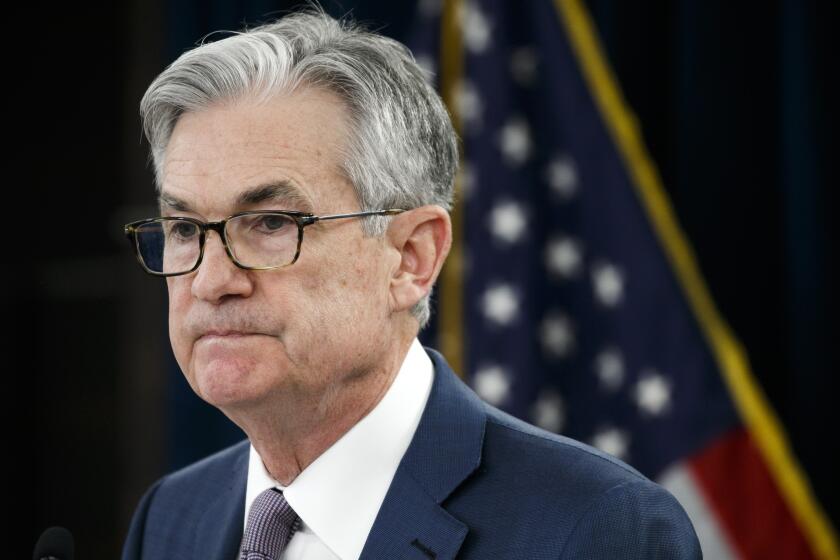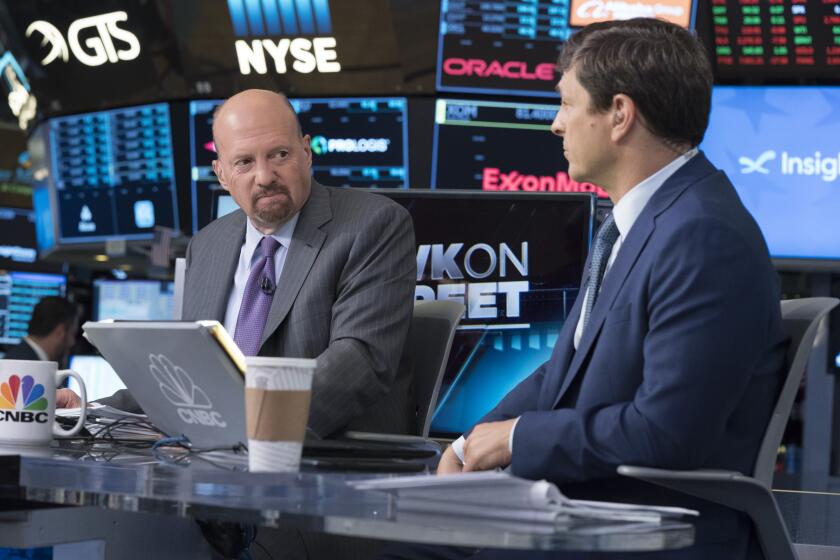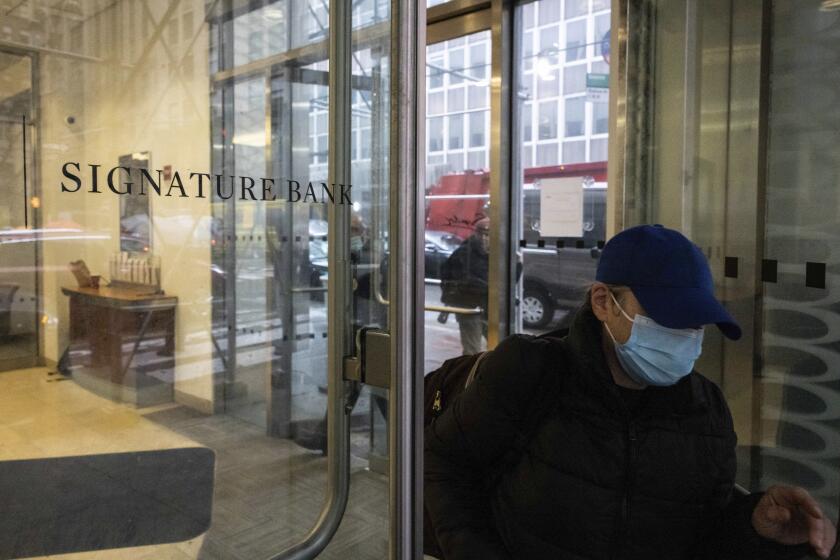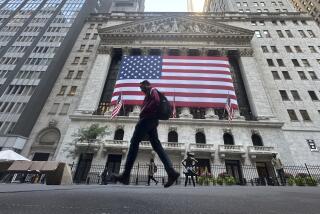Stocks rise, posting first 2-day rally since banking crisis began
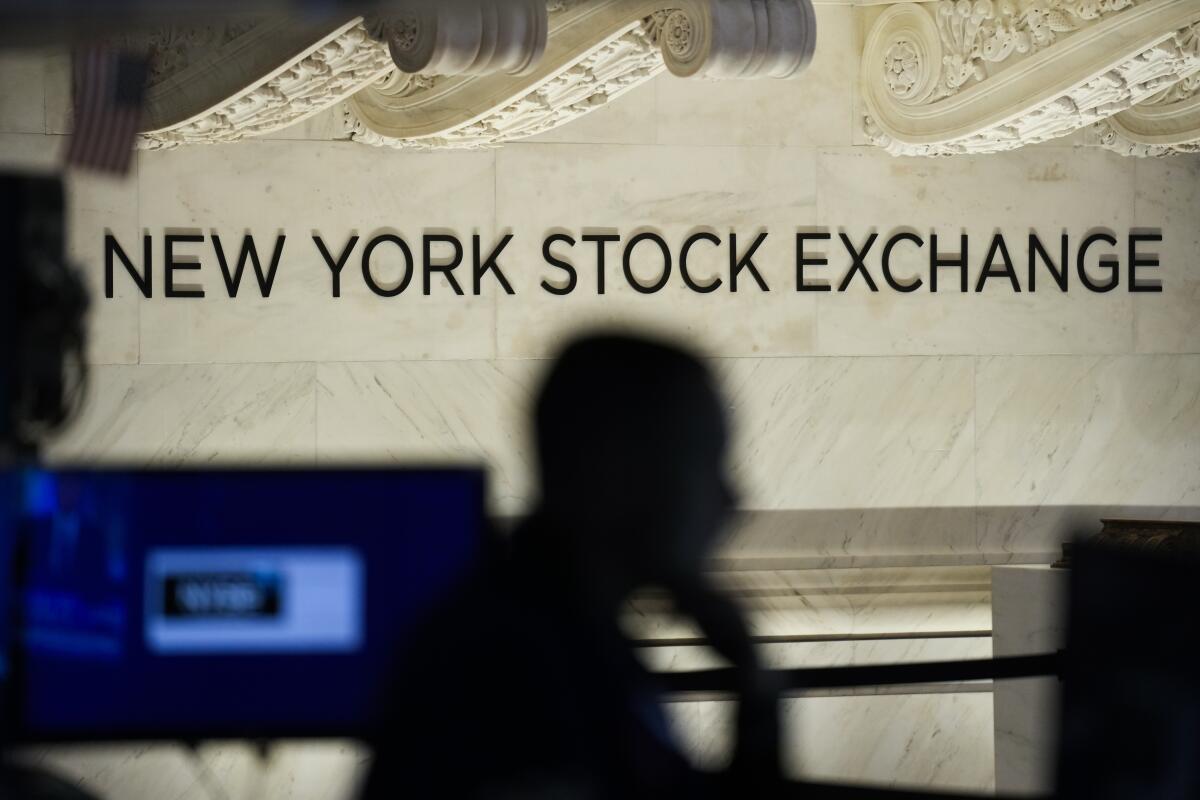
- Share via
Stocks rallied Tuesday, led by the banks most beaten down by the industry’s crisis, and some of Wall Street’s fear washed out on hopes the U.S. government will offer more help if needed.
The Standard & Poor’s 500 index jumped 1.3% to lock in its first back-to-back gain since Silicon Valley Bank’s quicksilver failure began two weeks ago. The Dow Jones industrial average rose 1%, while the Nasdaq composite jumped 1.6%.
Markets around the world have pinballed sharply this month on worries that the banking system may be cracking under the pressure of the fastest set of hikes to interest rates in decades. This week’s rally now runs into a huge test: On Wednesday afternoon, the Federal Reserve will announce what’s largely expected to be its latest increase in interest rates.
Tuesday’s strength for stocks came after Treasury Secretary Janet L. Yellen told a bankers group that more government assistance “could be warranted” if risks arise that could bring down the system. That might mean making sure customers at a weakened bank get all their money, even those with more than the $250,000 limit insured by the Federal Deposit Insurance Corp.
“Janet Yellen coming out and saying should other deposits need to be protected, they’re willing and able to do that, I think that’s a very strong statement,” said Mary Ann Bartels, chief investment strategist at Sanctuary Wealth. “And so markets have been able to calm down.”
Earlier this month, the U.S. government said it would make depositors at Silicon Valley Bank and Signature Bank whole. They were the second- and third-largest U.S. bank failures in history.
The Fed missed last year’s inflation spike. Its actions since then have sown havoc in the banking sector and now threaten the whole economy.
Those banks had struggled as depositors rushed to pull their money out en masse. Such runs can topple a bank, and investors have since been looking for the next one that could fall. Much focus has been on First Republic Bank, which shares some similar traits with Silicon Valley Bank, and its stock had lost 90% for the year through Monday.
It jumped 29.5% on Tuesday.
Other smaller and midsize banks also rallied, including a 9.1% climb for Comerica and a 9.3% jump for KeyCorp.
Hopes for the banking industry began to turn over the weekend after regulators pushed together two huge Swiss banks. Shares of both banks rose Tuesday in Switzerland, including a 12.1% jump for acquirer UBS. Credit Suisse, meanwhile, rose 7.3% after tumbling a day earlier.
Credit Suisse had long-standing problems that were relatively unique, but all banks on both sides of the Atlantic have the shared challenge of navigating a world with much higher interest rates than a year earlier.
Silicon Valley Bank telegraphed that its securities holdings were underwater. Why didn’t the regulators act sooner?
Central banks have jacked up rates at a blistering pace in hopes of getting high inflation under control. But such moves act like huge hammers with little nuance. They try to bring down inflation by slowing the entire economy.
That raises the risk of a recession later. Higher rates also hurt prices for stocks and other investments. That’s one of the factors that hurt Silicon Valley Bank, which saw the value of its bond investments drop with the rise in rates.
Earlier this month, much of Wall Street was bracing for the Fed to reaccelerate its hikes and raise its key rate by 0.50 percentage points. A string of reports on the economy came in hotter than expected, including data on the job market, retail sales and inflation itself.
But all the turmoil in the banking industry has traders betting the Fed will stick with an increase of 0.25 points.
Economically speaking, the vibes are off. Here’s what you should be doing with your money, according to financial experts.
Traders are even beginning to bet that the Fed will cut interest rates later this year. Rate cuts can act like steroids for markets, and they would also give the economy and banks more room to breathe. On the downside, they could give inflation more fuel.
It was just a few weeks ago that Wall Street had washed out a prior set of hopes for a rate cut. The resurgence of such expectations could be setting the market up for more disappointment in the future if they don’t happen.
“We’ve been down this road before where the market expects rate cuts and the Fed dials them back,” Bartels said.
That’s why even more attention may be on what the Fed says Wednesday than on what it actually does. The Fed is slated to release its latest projections on where policymakers see inflation, the job market and where rates are heading in upcoming years.
In markets abroad, stocks rallied across Europe and Asia.
With the recent failures of Silicon Valley Bank and Signature Bank, here are ways to make sure your money is safe.
For bonds, huge swings continued to rock the market. Yields have been mostly plunging this month on expectations of an easier Fed. The yield on the two-year Treasury, for example, tumbled from its highest level since 2007, above 5%, to less than 4%, which is a huge move for it.
It rose to 4.17% from 3.97% late Monday.
The 10-year Treasury yield, which helps set rates on mortgages and other important loans, rose to 3.60% from 3.44%.
The S&P 500 rose 51.30 points to 4,002.87. The Dow advanced 316.02 points to 32,560.60, and the Nasdaq climbed 184.57 points to 11,860.11.
AP writers Joe McDonald and Matt Ott contributed to this report.
More to Read
Inside the business of entertainment
The Wide Shot brings you news, analysis and insights on everything from streaming wars to production — and what it all means for the future.
You may occasionally receive promotional content from the Los Angeles Times.
